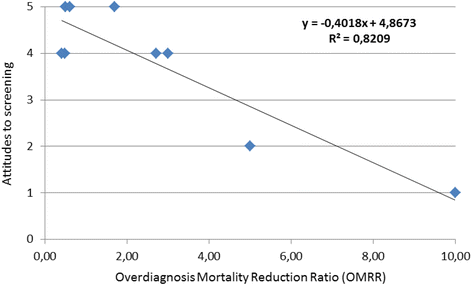Fake facts and alternative truths in medical research
- PMID: 29374485
- PMCID: PMC5787277
- DOI: 10.1186/s12910-018-0243-z
Fake facts and alternative truths in medical research
Abstract
Background: Fake news and alternative facts have become commonplace in these so-called "post-factual times." What about medical research - are scientific facts fake as well? Many recent disclosures have fueled the claim that scientific facts are suspect and that science is in crisis. Scientists appear to engage in facting interests instead of revealing interesting facts. This can be observed in terms of what has been called polarised research, where some researchers continuously publish positive results while others publish negative results on the same issue - even when based on the same data. In order to identify and address this challenge, the objective of this study is to investigate how polarised research produce "polarised facts." Mammography screening for breast cancer is applied as an example.
Main body: The main benefit with mammography screening is the reduced breast cancer mortality, while the main harm is overdiagnosis and subsequent overtreatment. Accordingly, the Overdiagnosis to Mortality Reduction Ratio (OMRR) is an estimate of the risk-benefit-ratio for mammography screening. As there are intense interests involved as well as strong opinions in debates on mammography screening, one could expect polarisation in published results on OMRR. A literature search identifies 8 studies publishing results for OMRR and reveals that OMRR varies 25-fold, from 0.4 to 10. Two experts in polarised research were asked to rank the attitudes of the corresponding authors to mammography screening of the identified publications. The results show a strong correlation between the OMRR and the authors' attitudes to screening (R = 0.9).
Conclusion: Mammography screening for breast cancer appears as an exemplary field of strongly polarised research. This is but one example of how scientists' strong professional interests can polarise research. Instead of revealing interesting facts researchers may come to fact interests. In order to avoid this and sustain trust in science, researchers should disclose professional and not only financial interests when submitting and publishing research.
Keywords: Breast cancer; Conflict of interest; Mammography screening; Mortality; Overdiagnosis; Polarized research.
Conflict of interest statement
Ethics approval and consent to participate
All named contributors provided written consent to participate in the study.
Consent for publication
All authors consented to having their data (their opinion on screening) published.
Competing interests
I have no conflict of interest to declare.
Publisher’s Note
Springer Nature remains neutral with regard to jurisdictional claims in published maps and institutional affiliations.
Figures
Similar articles
-
Mammography screening: A major issue in medicine.Eur J Cancer. 2018 Feb;90:34-62. doi: 10.1016/j.ejca.2017.11.002. Epub 2017 Dec 20. Eur J Cancer. 2018. PMID: 29272783
-
Screening mammography: update and review of publications since our report in the New England Journal of Medicine on the magnitude of the problem in the United States.Acad Radiol. 2015 Aug;22(8):949-60. doi: 10.1016/j.acra.2015.03.003. Epub 2015 Jun 19. Acad Radiol. 2015. PMID: 26100188 Review.
-
Conclusions in systematic reviews of mammography for breast cancer screening and associations with review design and author characteristics.Syst Rev. 2017 May 22;6(1):105. doi: 10.1186/s13643-017-0495-6. Syst Rev. 2017. PMID: 28532422 Free PMC article. Review.
-
Obligate Overdiagnosis Due to Mammographic Screening: A Direct Estimate for U.S. Women.Radiology. 2018 May;287(2):391-397. doi: 10.1148/radiol.2017171622. Epub 2017 Dec 21. Radiology. 2018. PMID: 29267146
-
Current Issues in the Overdiagnosis and Overtreatment of Breast Cancer.AJR Am J Roentgenol. 2018 Feb;210(2):285-291. doi: 10.2214/AJR.17.18629. Epub 2017 Nov 1. AJR Am J Roentgenol. 2018. PMID: 29091010 Review.
Cited by
-
Online information about mammography screening in Italy from 2014 to 2021.BMC Womens Health. 2022 Apr 27;22(1):132. doi: 10.1186/s12905-022-01718-w. BMC Womens Health. 2022. PMID: 35477449 Free PMC article.
-
Do we need the criminalization of medical fake news?Med Health Care Philos. 2021 Jun;24(2):235-245. doi: 10.1007/s11019-020-09996-7. Epub 2021 Jan 4. Med Health Care Philos. 2021. PMID: 33398487 Free PMC article.
-
Recomendaciones de prevención del cáncer. Actualización PAPPS 2018.Aten Primaria. 2018 May;50 Suppl 1(Suppl 1):41-65. doi: 10.1016/S0212-6567(18)30362-7. Aten Primaria. 2018. PMID: 29866358 Free PMC article. Spanish. No abstract available.
-
To Consent or Not to Consent to Screening, That Is the Question.Healthcare (Basel). 2023 Mar 30;11(7):982. doi: 10.3390/healthcare11070982. Healthcare (Basel). 2023. PMID: 37046909 Free PMC article.
-
COVID-19 and the eye: how much do we really know? A best evidence review.Arq Bras Oftalmol. 2020 Jun;83(3):250-261. doi: 10.5935/0004-2749.20200067. Epub 2020 May 29. Arq Bras Oftalmol. 2020. PMID: 32490972 Free PMC article. Review.
References
MeSH terms
LinkOut - more resources
Full Text Sources
Other Literature Sources
Medical
Research Materials


